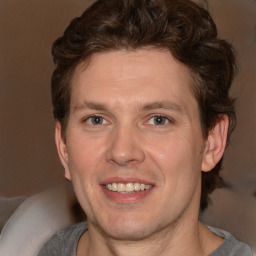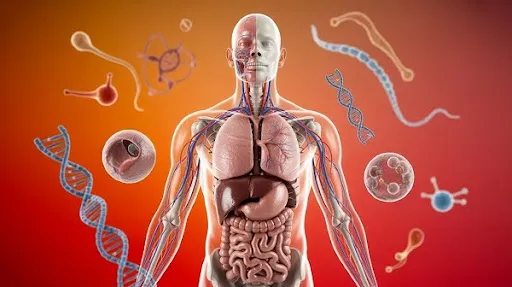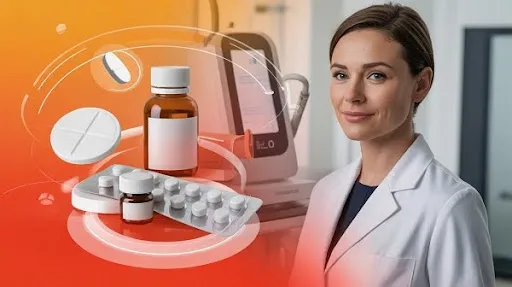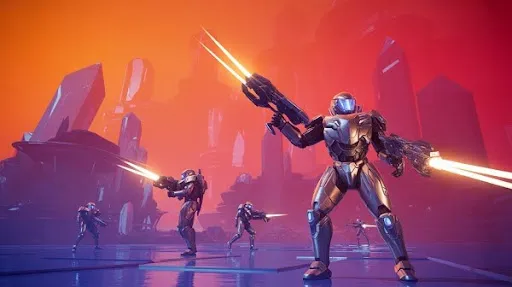When you watch a 3D medical animation video, it might look effortless. Internal organs contract, cells undergo mitosis, blood circulates, and everything is smooth. However, in reality, everything is meticulously worked, researched, and planned for hours, one frame at a time.
Prolific Studio specializes in producing clear, accurate, and captivating medical 3D animations. Each one is crafted to communicate a message, no matter how minute that micro-message may be.
These videos aren’t just pretty. They help medical students understand anatomy in ways textbooks cannot. They make patients feel informed, not confused. And they allow pharmaceutical companies to demonstrate products in a way that’s easy to follow.
Every detail matters, from the curve of a blood vessel to how a surgical instrument interacts with tissue.
Laying the Foundation
It all starts with a simple question: what do we want this animation to achieve? Is it teaching? Marketing? Explaining a procedure to a patient? Answering this early shapes everything else.
We gather input from clients, medical experts, and animators. They talk about goals, accuracy, and visuals. Marketing teams sometimes jump in too, offering insight into the audience. This conversation becomes the creative brief. It’s not just paperwork; it’s a map. It defines the flow, the scope, and the expectations for the final 3D medical video production.
Crafting the Story
Once the vision is clear, we start with the script. This is where science meets storytelling. Medical experts provide facts. Animators suggest visuals that make those facts understandable. The script balances precision with simplicity.
Take a blood flow animation, for example. The script will indicate which valves to highlight, the speed of the blood, and the camera angles that make it clear. Animators may build something contradictory: it is grand and mesmerizing, yet devoid of coherent, clear thought and therefore of the shape and form of a solid structure.
A decent script adorns the piece and breathes life into it; each frame, each scene is deliberate and carefully positioned to work seamlessly with the others to create a captivating piece, and every motion contributes to the motherhood in every minute detail it presents.
Scripts also vary depending on the audience. For students, we can use more technical language. For patients, we simplify. This stage is key to guiding the animation phase and ensuring every 3D anatomical model fits naturally into the sequence.
Research: Every Detail Counts
Before a single model is made, research takes center stage. Accuracy isn’t optional. Medical animation services rely on facts. Students, doctors, and patients trust these visuals. One small error can lead to confusion or misinterpretation.
We dive into:
- Anatomical references and textbooks for accurate structure
- MRI, CT, and ultrasound images to capture real-world details
- Surgical videos for realistic motion
- Microscopic and cellular studies to animate processes at a tiny scale
This research informs every static 3D model we create. When life-like animations move, they need to be accurate; no detail can be lost, especially in motion.
A heart beats; it doesn’t just move, rather it contracts in a particular rhythm, valves open at opportune moments, and blood circulates in finite pathways. That is the level of commitment one must have to make the animation work in a lifelike, real-world manner.
Visual Planning
Next comes storyboarding. Imagine it as sketching the skeleton of the animation. Each scene is outlined. Camera angles, lighting, timing, and placement of organs or tools are decided here.
Storyboarding is reviewed by clients and medical experts before any modeling begins. Storyboarding is essential not just to keep the message organized but also to provide something to work off and to make it easy to fix minor animation errors, as each frame can be easily referenced within the structure.
Modeling: From Concept to 3D
After storyboarding, the 3D modeling begins. Static 3D models are crafted for every organ, tissue, and anatomical structure. Artists focus on precision. Every curve, texture, and proportion is scrutinized.
Medical experts review each model to confirm accuracy. Small details, how a membrane folds, how light interacts with the surface of a tissue, how a surface of a tissue is shiny; not leaving out a single detail is the cherry on top. These models become the backbone of the animation. Without them, the animation phase cannot succeed.
Shading and Texturing
A model alone isn’t enough. Shading and texturing bring it to life.
- Skin, muscle, bone, and tissue textures make the structures recognizable
- Lighting highlights important features without overwhelming the viewer
- Subtle gloss, transparency, or depth cues enhance realism
These refinements improve and create better 3D animations for the complex world of medicine. 3D animation services help streamline the visual flow, focus the audience on specific segments, and improve their comprehension of the material. Even the best 3D anatomical renderings can appear flat, vague, or indecipherable without good shading.
Animation Phase
Once the static 3D models are ready, they move. The animation phase is where the models gain life.
Different animation techniques are used. Shape keys simulate soft tissue movement. Rigging and skinning make bones and joints articulate naturally. Procedural animation automates physics-based motion, and fluid and particle animation simulates blood flow or cellular interactions. Camera animation helps the viewer follow the action.
Movement is carefully timed and reviewed. Accuracy is critical. A heart must beat realistically. Blood flow must follow proper paths. Muscle contractions must appear natural. This phase defines how believable the animation feels and how easily viewers can understand the content.
Rendering
Rendering converts everything, geometry, textures, lighting, and movement, into a polished video. This step takes time. Each frame is processed to ensure clarity and realism.
Physically based rendering makes shadows, highlights, and textures accurate. Motion remains smooth, even in highly detailed animations. Rendering transforms the work of modeling and animation into a final product ready for presentations, online platforms, or VR and AR applications.
Adding Captions
Captions do more than name things on screen. They act as a guide through each sequence. With accurate shading, a seamless animation is achieved with every action, every component, and every procedure becoming coherent. The Prolific Studio team meticulously crafted captions to provide informative context without excess.
We inscribe every caption and measure its length thoroughly to prevent excessive wording. Thereafter, we confirm the text’s content and contextual relevance to the scene, and collate the text with the borrowing, adding animations to the caption wrappers.
Fonts, alternative dimensions, manipulations, and text-spatially adorned enhancements are used to achieve visual harmony. Background macro-level animations are incorporated to create a smooth feel to the captions.
For students, captions make complex steps easier to track. Captions simplify complex medical terminology for patients, enabling them to articulate and comprehend the content being presented.
Overall, captions are paramount in transforming professionally produced 3D medical animations into functional, comprehensive, and educational medical tools. They transform visuals into stories that educate effectively.
Color Correction
Color is more than decoration. It shows which parts matter most. It brings realism to every 3D anatomical model. Without proper color balance, even precise models can feel flat or confusing.
At Prolific Studio, color correction focuses on:
- Highlighting key structures with contrast
- Adjusting brightness so details are clear without straining the eyes
- Refining tones so tissues, organs, and instruments feel realistic
- Adding subtle effects to enhance depth and focus
Small changes here have a big impact. They guide the viewer’s attention and make visually impressive 3D medical animations easier to understand. The goal is clear, natural, and accurate visuals that support learning.
Voiceover and Sound
Sound gives movement meaning. A voiceover explains, emphasizes, and makes the animation more immersive.
Every term is pronounced correctly. The narration matches the animation timing, so nothing feels out of place. Background music stays subtle, providing energy without distraction. Sound effects like heartbeats, breathing, or tool clicks make the scenes feel alive.
Subtitles are synced with narration. Students can follow along even in quiet spaces. Patients gain confidence when the audio matches what they see. Voice and captions together create an informative medical animation that communicates clearly and memorably.
Post-Production
After animation, captions, and sound are in place, post-production begins. This is where everything comes together.
We review each frame for smooth motion and proper pacing. Camera angles and transitions are adjusted for clarity. Color and light are fine-tuned. Minor visual effects enhance realism without overloading the viewer.
To match their artistic vision, Prolific Studio lets their content collaborators provide formative feedback on all captioning text integrations, enabling synthesis that harmonizes with the animations.
The animations consist of fundamental analysis and synthesis, which, once completed to the collaborators’ expectations, are polished and aligned to be functional and adaptable for educational purposes, patient documentation, or commercial/professional training paradigms.
Client Feedback: Perfecting the Animation
Before final delivery, animations are shared with clients, medical professionals, and other stakeholders. Their input ensures the video is correct, engaging, and effective.
Feedback often focuses on pacing, camera angles, or text clarity. We implement changes carefully to preserve visual consistency and maintain accuracy. This collaborative approach ensures that every 3D medical video production project delivers real value.
Localization and Adaptation
Many animations need to reach global audiences. Localization and adaptation make that possible.
Scripts and captions are translated into target languages. The animations’ aspect ratios are adjusted to fit social media or mobile screens. Compiling the animations helps avoid overly long presentations or marketing sets.
This process ensures 3D medical animation in VR and AR works on multiple devices and platforms. Accessibility improves comprehension and extends the animation’s reach worldwide.
Marketing Support
Animations are often part of larger campaigns. Prolific Studio provides materials that help these videos reach the right audience.
- Social media graphics and posts
- Slides and posters for presentations
- Short promotional video clips
These resources make 3D product video animation services more effective. The animation doesn’t just educate, it connects, engages, and aligns with the client’s brand.
Publication: Delivering the Final Product
After edits, localization, and marketing preparation, the animation is ready for delivery. Formats are optimized for:
- E-learning platforms and online training
- Medical websites and educational portals
- Conferences, workshops, and seminars
- VR and AR experiences
Certain export settings help with the technical aspects of the video. Ensure the motion is smooth to maintain the video’s pacing. Verify that colors remain true and that visuals are of good quality. Export videos that will run consistently and optimally on the chosen device or platform.
Frequently Asked Questions
How to make medical animation videos?
The workflow you use is the same across every industry. It is the same here, in sequence: from research to scripting to storyboarding to modeling to shading to animation to rendering, and finally to post-production. Each stage of the workflow is built with accuracy and precision.
What makes a medical animation effective?
The work that you have done is great. It consists of a combination of high-quality 3D anatomical models that are accurate and move realistically, paired with flattering camera motion. They are accompanied by clear captions and voice-overs. Good pacing improves overall animation.
How does 3D animation cost vary?
3D animation cost depends on complexity, duration, number of structures, and the use of advanced animation tools like procedural animation or fluid and particle animation. Extras like voiceover, localization, and marketing materials also affect cost.
Can 3D medical animation videos be used for VR and AR?
Yes. The animations you created can be easily modified for virtual or augmented reality experiences. They just need to be formatted, with additional camera angles and interactivity.
How do medical animations improve patient understanding?
They make complex processes simple. Many patients find that seeing a step-by-step visual can improve their understanding and confidence in the treatment or procedure, as well as in the mechanics of the disease.
Final Words
Prolific Studio, a top-notch video animation agency, does more than make videos. We create medical stories that teach, inform, and inspire.
We take pride in the work that we have done. Medical facilities can get high-quality 3D work. All components of the animation are professionally finished. They have a high visual quality, and the images and text are in sync.
Understanding and memory retention are improved, made easier, and more efficient through the services we provide. It is now easier for hospitals and pharmaceutical companies to convey their ideas. Let us help you leave a good impression and preserve ideas with animations that educate and engage.
Related Articles:









